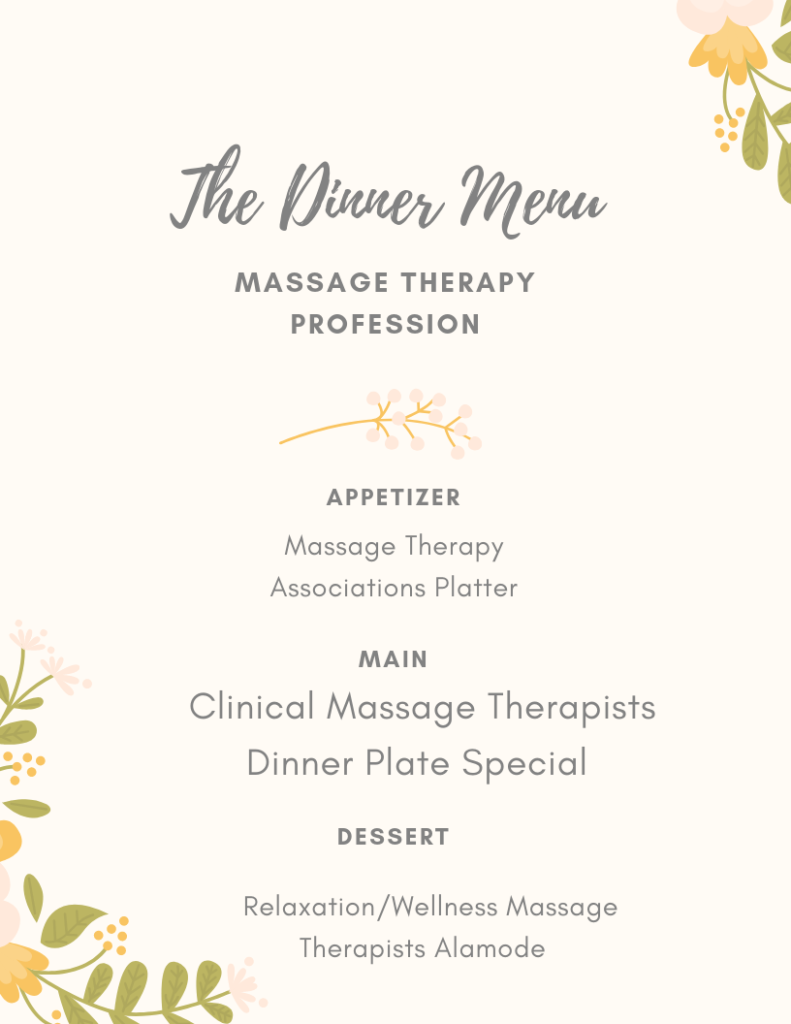If you are not at the table, you are on the menu is a political saying that supposedly comes out of WA DC in about 2000 with no known origin. I first heard it said that the Alliance for Massage Therapy Education Conference (I think in about 2010) in Tuscon AZ by John Weeks, publisher/editor of the Integrator Blog News and Reports.
What it means is that if you/we don’t have a seat at the table with the insurance carriers, insurance commissioners, hospitals, doctors, nurses, legislators in every state, legislators in WA DC – we will be on the menu. You will have other agencies, politicians, insurance companies creating policies, rules, laws and you won’t have a say in creating allowable fees, benefits and policies. For example: one of the biggest issues we are having currently in WA state is that the insurance companies are drastically reducing allowable fees. The insurance companies set allowable fees using formulas that consider the amount of work the provider does(time and intensity), liability insurance costs and practice expense data. The insurance companies do not have any data on practice expense from the massage profession so they just guess and use their own data. We haven’t had any association representing us with the insurance carriers.
Read the rest of this at my new Website www.massagetherapynexus.com 12/17/2024
Let’s get to the table.
Whether you like it or not, whether you want it or not, massage therapy will most likely be covered by health insurance….eventually….or so it seems with so many calling for it’s use. The thing is that we are not at any table at all. All of these things that have been happening that are calling our name, have been done by groups other than massage associations except for a few instances where AMTA has done some work.
We do not have associations stepping up to the table to be our voice. It is important to start having these conversations NOW so that the massage therapy profession can bring our message to the table and create what we want as far as benefits and allowable fees. We need to be at the tables in each state with insurance commissioners, health care insurance carriers, and in state capitals where laws are being created. Otherwise it will be too late and we will be handed the leftovers.
